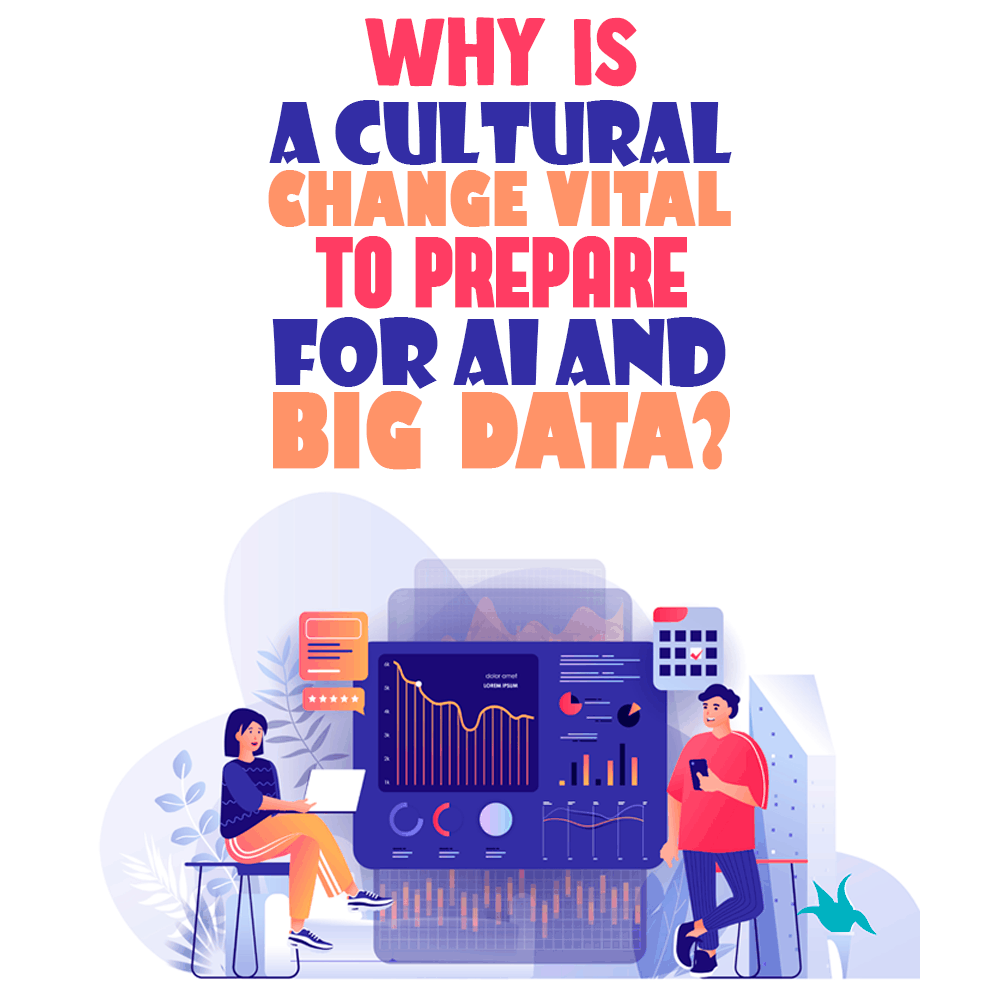 Data is the rocket fuel that’s propelling businesses to new heights. But harnessing the true value of data isn’t always easy. In most cases, companies run into problems because they don’t have the right culture to support a data-driven business environment.
Data is the rocket fuel that’s propelling businesses to new heights. But harnessing the true value of data isn’t always easy. In most cases, companies run into problems because they don’t have the right culture to support a data-driven business environment.
With data science and Artificial Intelligence (AI) providing a solid foundation for digital transformation, modern businesses are in a mad rush to reap its benefits. But to realize these benefits, organizations need leaders to formulate a clear vision across all levels and prioritize their actions accordingly.
In this scenario, managers and business leaders have to be great communicators to clearly convey the benefits of harnessing data and AI as means to drive enhanced efficiency, identify new opportunities, and boost revenue.
In this post I’ll show you why cultural change is important and how it can be used to successfully integrate AI and Big Data protocols in an organization. This assures your business stays relevant and acquires a competitive edge.
What’s AI’s Role in Data Analytics?
Companies that leverage AI and data analytics are well-placed to make data-driven predictions, provide enhanced user/customer experiences, boost cybersecurity protocols, and more.
AI in data and analytics helps accelerate the process of collecting, cleaning, and transforming data for analysis. Furthermore, it also helps businesses make more accurate decisions in real time. It can also be crucial to boosting organizational productivity.
However, to use AI correctly and derive the most value from your data, you need to align your AI-driven data and analytics project with your overall company mission. After all, the company’s mission dictates how AI is used. That’s where company culture enters the picture.
What’s the Role of Company Culture?
Company culture is important because the true power of AI doesn’t lie within the technology itself but in how we use it. For example, you can use AI-driven data analytics to accelerate processes that deliver the most value.
This type of mission-oriented alignment is implemented successfully when leaders at the top have a deep understanding of the value of AI and Big Data. This approach also helps all stakeholders have realistic expectations of the type of results they can expect.
What do the CEO and board think of AI? What about Big Data?
Do they know enough about it, or is it something they read in a newspaper?
What about your colleagues? Are they fully committed?
The answers to these questions will help you devise a successful strategy to move forward. When everyone is on the same page, you can manage the hype surrounding this technology. They can also help evangelize the benefits of using this technology to accelerate adoption without resistance.
To implement a successful data-centric culture, you need everyone to buy into the idea. You need the support of the c-suites, managers, and colleagues. The leadership should also help promote these changes to enable large-scale adoption.
But Is Everyone Comfortable With AI in the Workplace?
If history is anything to go by, you can bet that some employees will feel threatened by the introduction of AI. The key here is to train your staff to demystify the technology, explain its inherent benefits, and identify how they already use it in their daily life (for example, Alexa).
Those who are excited about AI and Big Data may have unrealistic expectations and can quickly get frustrated with the trial-and-error process. This makes it vital to train staff and reaffirm the long-term benefits of using AI in the workplace.
As AI is trained to take on repetitive and mundane tasks, employees currently working in such roles have to be prepared to do more meaningful work that emphasizes their human attributes. For example, we need humans to engage in critical analysis, creative problem-solving, and more.
Create a Detailed Roadmap for Adoption
Before you start the process, it’s important to define why you’re doing it. It’s essential to develop a project roadmap. Your goals will help you prioritize what needs to be done and build a team to make it happen. In this scenario, it’s also best to train each department as AI-driven data analytics becomes available to them. This approach also goes a long way in building internal support for your AI data project.

Business and IT leaders will also have to find a way to break down the company vision into smaller, attainable, concrete goals. Every organization has many problems to solve. While it’s tempting to jump in and deliver solutions right away, it’s essential to improve your understanding of the problems to provide the right solution.
In the beginning, it’s best to start with goals that are likely to be achieved quickly. This will help more people in the company buy into AI and Big Data at the workplace. It’ll also ensure that your stakeholders don’t lose patience while going through this process.
AI and Data Analytics Are the Future
AI and data analytics are the underlying force that drives modern businesses forward. As such, it’s crucial to incorporate it into your business, but with a plan. As you can see from this post, it’s not as simple as installing AI and data analytics tools and forgetting about it.
To get more value from our data, we must change the way we approach our business and how we manage our expectations. Every transition can be difficult at first, but with perseverance and determination, the process becomes easier.
